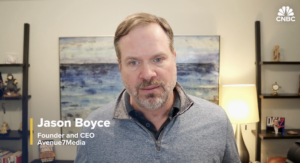Here’s a little secret to Amazon marketing success…
Your success in Amazon marketing actually lies in your ability to track and measure your results so that you can improve your strategies for your specific Amazon marketing needs.
At every point in your journey through advertising and marketing, you should be thinking about ways to improve your results.
This means that you must keep track of your metrics, and here’s how you can do that as a seller: Know the critical metrics for evaluating success of Amazon marketing to prioritize your time and resources!
More specifically, we’ll look at the importance of tracking metrics in terms of Amazon Sponsored Ads. If you neglect measuring your critical metrics on Amazon, you’ll spend more money than necessary on trying to expand and improve your marketing.
Even more promising is the reality that investing more effort in tracking your key metrics on Amazon will in turn help you improve your keyword targeting and copy, which brings you more sales with lower ad spending.
Today, we’ll breakdown the critical metrics for evaluating success of Amazon marketing that you need to master if you’re going to make your business a success on Amazon.
What’s So Special About Amazon Marketing?
What makes Amazon marketing different from most marketing? Everything!
Amazon’s e-commerce marketing tools and infrastructure are constantly evolving. Sellers should continuously update their business strategies in tandem with the updated Amazon Marketplace.
Amazon is its own entity and is unlike any other aspect of running your business, which is the driving force behind our mission–to help sellers develop Amazon marketing strategy.
Amazon Marketing is the combined set of actions to promote and sell products on Amazon marketplace – traffic plus conversion factors.
Driving traffic includes taking these specific actions and using them to optimize your product’s presence on Amazon:
- Amazon SEO (Search Engine Optimization) – Optimizing product pages to appear sooner in Amazon’s organic search results. Amazon SEO = Optimizing Product Listings = Better Rankings = More Visibility = More Sales.
- Amazon Advertising – Using Amazon’s pay-per-click formats to endorse products and brands. These include primary positioning on the search results, banner ads, video ads, custom Storefront targets on Amazon, and display ads in Amazon’s off-Amazon network.
- External Marketing – Including in your strategy other channels (off Amazon) to promote products and brands. External (off-Amazon) marketing can be paid or unpaid, and it’s ultimately your responsibility to know your business well enough to determine what marketing strategies you can implement.
Check out our most recent, comprehensive post on Amazon Advertising for more information about tackling Amazon Advertising, Using Amazon Advertising to Increase Revenue and Gain New Customers.
Driving conversion includes taking these specific actions and using them to optimize your sales on Amazon:
- Visual Creatives – your primary images, secondary images, video content, Storefront images, and videos are all visual creatives that you’re using to convince the person you attracted to your page that your product is the right choice for their need.
- Copywriting – your written content has to pull double duty: SEO to get people to the page, and when they’re there, still be human-readable enough to convince them your product is the right choice for their needs.
- Meeting customer needs – your responses to negative customer reviews, your engagement through posts, your pricing and in stock strategy all feed into whether customers can trust you once they land on your page.
A successful Amazon Marketing strategy is therefore a balance between traffic and conversion drivers.
Sell Stuff on Amazon by Optimizing Your Marketing Strategy
In order to sell stuff on a site like Amazon which hosts millions of products to sell to billions of customers, you need a strategy that works for your brand’s specific needs!
You can sell stuff on Amazon by optimizing your marketing strategy through the specific channels we’ve outlined previously: Amazon SEO, Amazon Advertising, and External Marketing.
Then you evaluate the copy, images, and customer-impacting elements of your listing by your advertising/traffic rates of traffic to conversion (how many people who came stayed to buy).
Amazon SEO – Steps You Can Take to Rank High in Search Results!
Search Term Keywords
On the back end of every listing, you can add specialized keywords or misspellings to gain SEO on those terms.
Some examples from prior clients:
- The term “abdl” for a client who sold adult diapers and wanted the business of that fetish community, but didn’t want that term on their detail page.
- “Show” and variations using show, for a client in the “shoe” category – because it’s a real word, Amazon doesn’t redirect the search, making the use of show keywords important.
- Term variations such as omega-3, omega3, and so on. While you can include the incorrect syntax on the main page, some brands prefer not to and to keep those keywords on the back-end search term field.
Product Text Fields
In most of the A+ content fields, there are 2000 available characters! This gives you a lot of space to work with when writing content and getting a lot of traffic using keywords.
Images
Google indexes the image title name, so be sure to update titles before you upload. Additionally, there are search term fields in the image file elements of the A+ page that can help you build your SEO and ranking on Google and on Amazon.
Reviews
Let’s face it, reviews on Amazon can make or break your product’s success. You want to nurture your customers so that they will provide positive feedback for your potential customers.
And, when you respond to positive or negative reviews, make sure to use important keywords in your response so you get keyword benefits even from engaging with customers!
Q&As
This is one of our favorite places to put search terms that aren’t allowed anywhere else on Amazon. Because you can’t make certain claims on Amazon, due to federal regulations, the only place on the page you can use those search terms and gain SEO value on your detail page, is in the Q&A section.
Product Information
Above the video section and below the A+ is a product information widget. This includes various additional details about the product that you can add to the catalog, and these fields are different per product subcategory.
Paid Advertising and Organic Search – Benefits of Paid Media Buys on and off Amazon in Growing Your Reach
Amazon paid to advertise allows you to direct when traffic is directed to your listing, which can help you precisely target specific products and keywords on Amazon search.
Amazon External marketing is necessary for that you don’t want to limit your brand and product’s reach to just Amazon, and while it’s great to succeed on Amazon (the most prominent e-commerce giant), you should always try to expand your opportunities to gain new customers.
On/Off Amazon Advertising
Social media is the most commonly thought of advertising when you’re thinking of off-Amazon media buys – whether Instagram, Facebook, Twitter, Pinterest, or Snapchat – and these can sometimes outperform Amazon PPC, when both are directed to an Amazon detail page.
This is because social media advertising usually allows for much more nuanced social targeting based on customer values, likes, and demographics, rather than the way advertising works on Amazon, which is to target individual products, brands, categories, and keywords – in other words, objects – rather than targeting the potential customer.
PPC/CPM (Cost Per Impression) Advertising
While the cost per click is the most common type of paid advertising for what we do for our clients, we will also often run campaigns where the costs are charged per impression. For us, this is typically Facebook and Instagram.
This type of traffic generation is meant to increase brand awareness, as some research suggests that it takes up to 7 repetitions to get consumers to remember a brand name!
AAP (Amazon Advertising Platform), AMG (Amazon Media Group), AMS
Almost two years ago, the Advertising groups at Amazon were all merged and they’ve been slowly integrated since there. This has allowed previously vendor-only features like display ads to be made available to brand-registered sellers.
PPC Advertising
Pay-per-click advertising is exactly what it sounds like – you only pay when someone clicks!
Oddly, the clicks that are generated in a Facebook or Google PPC campaign are never matched by the received traffic on Amazon’s side.
We can only assume that it’s due to customers hitting back really fast!
This type of advertising is basically relying on the idea that to a customer, your protein bar has much the same chance as any other protein bar, if you bid on the term and get customers to view your product as a potential option for their needs.
Newsletters/Email
A great low-cost (long-term lower cost) option for getting people to your page is to build a mailing list. We recommend offering incentives to get customers to sign up for your mailing lists such as free samples, discounts, free products, gift cards, or warranties.
However, you can get them to hand over their means of communicating with them, the better! We highly recommend ManyChat for this purpose, as Facebook accounts are so ubiquitous.
Content Targeting – Blogs and Online Forums
Blogs and online forums such as Quora or Reddit are a great way to demonstrate knowledge or mastery of a particular topic and work in the product that’s related to solving that problem.
For example, if you’re trying to talk about a supplement that helps with a particular physical issue, then demonstrating mastery of that physical issue makes someone far more likely to listen to you when you then say, hey!
This item solves that problem!
Social Media
Engagement with organic comments on social media, and linking to your products or Storefront are another great way to get traffic to your pages.
Be warned though – looking like too much of a brand shill could actually turn off customers, and prevent them from checking your products out at all.
Managing Conversion and Growing your Brand on Amazon!
Brand Stores
Amazon Stores allows sellers to create a brand profile to showcase their products on a single profile with multiple pages to explore.
Stores create an immersive experience for your customers to learn more about your brand, and discover other products that you sell. You can make your Amazon Store discoverable to shoppers by sharing your link on social media, including your store’s URL on your website, and even under your product title as a clickable link in your brand’s name.
Pricing
Pricing too far below or above the competition sets a particular expectation in the mind of the customer.
If you’re high-priced, then you need to explain why.
If you’re low priced, then some customers may not believe what you are offering is legitimate.
Either way, since your goal is to convince the customer to buy your product, you need a pricing strategy aligned with customer behavior.
Deals/Coupons
Deals and coupons are a great way to drive engagement and conversion, and therefore teach Amazon’s automated search algorithm that your product deserves to be shown more often.
The more it sells; the more the system will want to display it and get that referral fee.
Deals and coupons can boost the conversion rate on the listing, teaching the algorithm to show your product more often for those search terms.
Compelling Content
Once you’re successful at getting the customer to your page, your content needs to tell a story that compels the right customer and repels the wrong one. Both of these are equally important! The cost of managing returns can tip a brand from profitable to unprofitable on Amazon very quickly.
Prime/Non-Prime
Amazon customers have been trained to expect fast delivery. So if an item is priced right, got the attention of the customer, has compelling content, and is available to buy – but won’t ship and arrive for a week, the customer may still choose to pay on their purchase decision.
While unusual circumstances during the middle of 2020 temporarily allowed merchant-fulfilled offers to win the buy box over FBA (fulfilled by Amazon), this has been the first time that’s happened in many years!
In-stock Metrics
Remaining in stock is rather the most critical aspect to the success of your marketing plan – if customers can’t buy your stuff…. Then what is the point??
Promotions
One great way to improve conversion rates on your page is to offer promotions, such as social media promotions that drive traffic to your page, or on Amazon promotions such as Buy on Get One Free or Percentage off promotions. This can be a great way to boost sales and engagement for otherwise slow-moving products.
How Amazon Account Management Can Help You Succeed With Amazon Marketing
Do you ever feel like running your business and selling your products is like a game of Whack-A-Mole?!
There are so many moving parts in the great adventure that is being a business owner.
Here’s a dose of reality – once you start selling on Amazon, that feeling of pandemonium can often become even more overwhelming when you lack the proper insight that’s necessary to sell and growing (successfully) on Amazon.
We often joke in these posts that Amazon is a “beast,” and we mean it. The specificity and attention to detail required to successfully start selling your product on Amazon is no laughing matter once you see a bill for $4000 in advertising or more with no clear idea as to what kind of benefit you achieved with that spend.
We help Amazon sellers every day who experience the very real frustration of trying to make it on Amazon. Our Amazon account management plans provide you with the peace of mind that experts are handling your Amazon marketing!
We give you detailed weekly reports on your traffic and ranking, help you understand your conversion factors, and give you guidance on where and how to improve, on and off Amazon.
Want to learn more about what we do? Contact us for a discovery call today!











